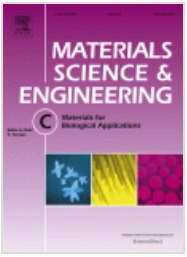An ideal dental implant coating should provide a highly protective interface and an osteogenic function. Inspired by the excellent
biocompatibility and
anti-corrosion of the Nb element, we produced Nb-based oxide,
nitride and
carbide films as well as the pure metal Nb film for surface enhancement of dental implants, and compare the impact of the nonmetal elements on the electrochemical, tribological, tribo-corrosion and biological performance of the coated implants. The NbC film, composed of a single-phased subniobium carbide, displays mechanical advantages and anticorrosion characteristics that are distinguished from the other
composite films, highlighting its potential outstanding protective efficiency for dental implants against corrosion and wear. Rat bone marrow mesenchymal stem cells (rBMSCS) were found more readily to attach, grow and osteogenically differentiate on the NbC film compared to the Nb, NbO and NbN films, indicating the osteogenesis potential of the NbC film. Taken all the results together, it can be concluded that the NbC film have the highest potential for dental implant
surface modification.

